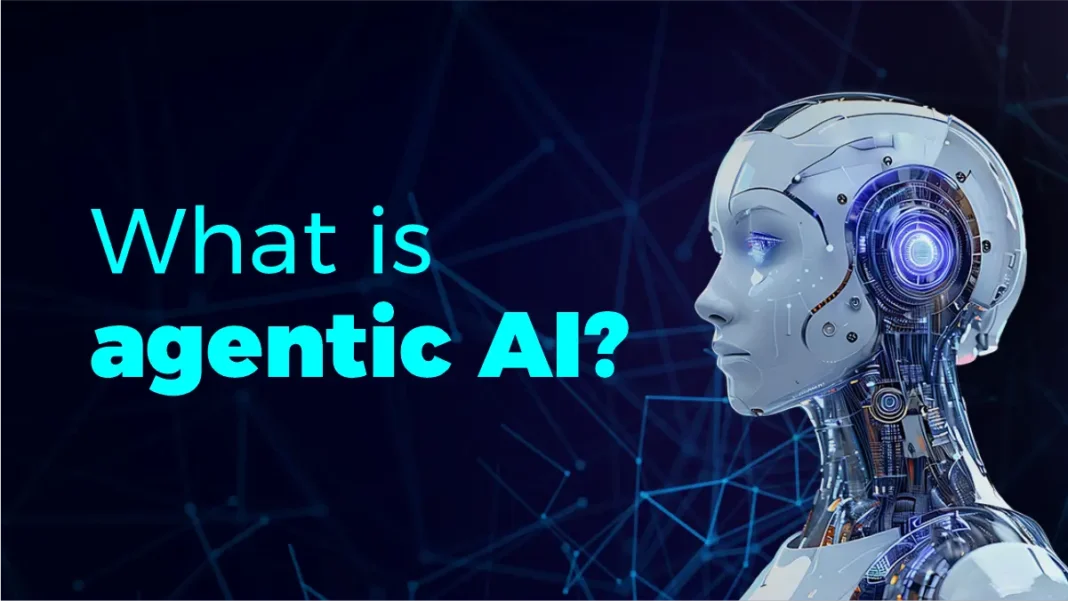What is agentic AI? In simple terms, agentic AI refers to intelligent systems that don’t just generate content – they act autonomously to achieve specific goals. Unlike traditional generative AI, which responds to prompts, agentic AI plans, decides, and executes complex workflows with minimal human supervision – establishing a new frontier in how machines can support, augment, and anticipate human needs.
Defining Agentic AI – Meaning, Evolution, and Autonomy
What is the meaning of agentic AI? According to IBM, agentic AI is an artificial intelligence system that can accomplish specific goals with limited supervision, composed of AI agents that mimic human decision-making in real time through coordinated, autonomous behavior IBM.
This marks a shift – generative AI creates, but agentic AI acts: it perceives, reasons, and executes over multiple steps ForbesIBM. A key academic taxonomy emphasizes that agentic AI involves sophisticated multi-agent orchestration, persistent memory, dynamic task decomposition, and emergent coordination arXiv.
Agentic AI vs Generative AI – What’s the Difference?
agentic ai vs generative ai: Generative AI responds reactively with content creation based on user prompts. Agentic AI, in contrast, takes proactive action to achieve goals – planning workflows, invoking tools, adapting strategies, and iterating in real time ForbesThomson Reuters.
Here’s a summary:
| Aspect | Generative AI | Agentic AI |
|---|---|---|
| Core Role | Creates content based on prompts | Executes multi-step, goal-driven tasks autonomously |
| Autonomy Level | Low – you guide each step | High – the system decides what to do next |
| Example | ChatGPT answering a question | AI agent booking travel, adjusting schedule |
| Value | Fast content generation | Workflow automation and intelligent action |
Thomson Reuters puts it plainly: agentic AI makes decisions and acts to keep processes going, whereas GenAI waits for input and produces output Thomson Reuters. This technological transition is a theme across business narratives TechRadar.
Real-World Examples – When Agentic AI Becomes Autonomous
“Is ChatGPT an agentic AI?”
No. ChatGPT is a generative AI – it requires explicit prompts for each response and does not independently orchestrate tasks or workflows.
Examples of agentic AI:
- Customer support agents that not only answer queries, but analyze context, recommend actions, and schedule follow-ups.
- Autonomous research systems that review literature, synthesize findings, propose hypotheses, and design experiments arXiv.
- Agentic browsers like AI-powered browsers (e.g., Opera’s preview, OpenAI’s Operator) that interact with websites and perform tasks on users’ behalf Wikipedia.
- In enterprise: Qualtrics uses agentic AI to turn feedback across platforms into real-time actions – achieving scale in customer and employee engagement Business Insider.
- In public sector: UK agencies deploy agentic AI to draft documents, summarize meetings, and manage schedules – freeing staff for value-driven work TechRadar.
Benefits, Challenges, and Strategic Considerations
Benefits
- Operational agility: Converts insights to actions automatically – Gartner reports 73% of traditional AI insights fail to translate into action; agentic AI closes that gap TechRadar.
- Scalability & resilience: Multi-agent systems can be modular, fault-tolerant, and future-proof TechRadar.
- Efficiency gains: Reduces repetitive tasks, freeing professionals for strategic roles TechRadar.
Challenges
- Accountability gaps: Autonomous systems raise legal and ethical questions – who is responsible when “agents” act? arXiv.
- Security risks & unpredictability: Autonomous decision-making demands transparency, audit trails, and fail-safes The Economic Times Wikipedia.
- Implementation complexity: Setting up agentic workflows requires clear goals, governance, and robust infrastructure TechRadar.
Building Agentic AI – Frameworks & Governance
A robust path to implementing agentic AI includes:
- Architectural planning: Stack multi-agent systems with orchestration layers, memory, RAG, and reinforcement learning for adaptability arXiv.
- Governance frameworks: Align agentic AI with NIST Risk Management, IEEE ethical AI standards, and emerging ISO guidelines Wikipedia.
- Ethics by design: Embed hallmarks like audit trails, transparency, human-in-the-loop checkpoints to balance autonomy with oversight The Economic Times arXiv.
Future Outlook – Where Agentic AI Is Headed
The next wave of agentic AI will likely integrate real-time sensor data, IoT devices, and enterprise knowledge graphs, creating systems that can perceive the world as richly as they process it. Imagine manufacturing plants where AI agents monitor machinery performance, predict failures before they happen, and autonomously initiate repairs – all while adjusting supply chain flows to minimize downtime. Industry analysts from Gartner forecast that by 2027, more than 40% of enterprises will deploy agentic AI systems to manage multi-step processes without direct human oversight, unlocking unprecedented levels of operational efficiency and resilience.
Preparing for the Age of Autonomous AI
For organizations, embracing agentic AI means rethinking workflows, decision rights, and talent strategy. Companies must establish not only technical infrastructure but also cultural readiness for AI-driven autonomy. This includes training staff to work alongside intelligent agents, defining clear escalation protocols, and embedding trust through transparent reporting. Businesses that take a proactive approach – combining innovation with governance – will be best positioned to capture the early-mover advantages in this rapidly evolving field, while minimizing risks and maintaining compliance with emerging AI regulations worldwide.
Conclusion & Expert Insight
Agentic AI marks a paradigm shift: from AI as a creative tool to AI as an autonomous executor. This evolution unlocks productivity, scalability, and new levels of intelligence – but it also demands rigorous strategy, ethical design, and responsible oversight.
“Agentic AI is not just about doing things better – it’s about thinking, planning, acting.” – A leading AI strategist
Start small with constrained pilot agents – e.g., automating a customer service triage or internal scheduling workflow. Monitor performance, implement guardrails, then gradually scale. Prioritize transparency, accountability, and alignment with business goals.
People Also Asked (FAQs)
What is an AI agent?
An AI agent is an autonomous software component designed to perform specific tasks – like chatbots or email triage systems – it follows predefined logic and reacts to instructions. In contrast, agentic AI orchestrates multiple agents towards long-term goals.
What is an example of agentic AI?
Examples include AI systems that autonomously schedule meetings, conduct literature reviews, summarize meeting minutes, or proactively adjust workflow when parameters change.
What is the difference between AI and agentic AI?
AI broadly refers to any machine intelligence; generative AI creates content; agentic AI acts autonomously – planning, reasoning, and executing workflows independently.
Is ChatGPT an agentic AI?
No – ChatGPT is generative AI. It responds reactively to prompts and does not independently initiate actions, plan multi-step tasks, or orchestrate workflows.


